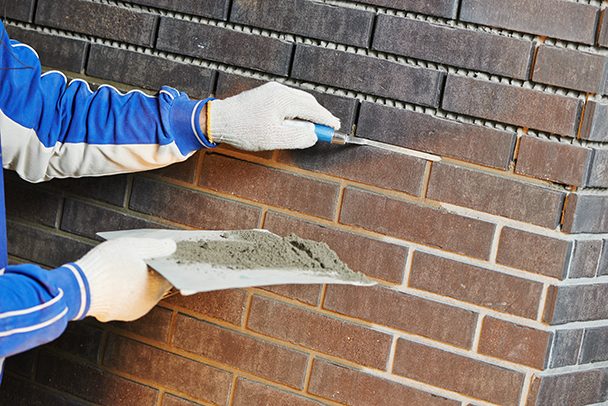Brick Home Owner Maintenance Tips: Repointing Your Crumbling Mortar

If your aging home has a brick exterior, it is important for you to occasionally monitor the condition of the mortar between your bricks. With mortar often being made of a far less durable material than the bricks themselves, weathering and decay can have a serious impact on the condition of your home’s mortar. This may be especially true if you live in a cooler climate that experiences frequent freezing and thawing periods.
To check the condition of your home’s mortar, look for signs of cracking and erosion. These tell-tale signs are a good indication that your mortar is in need of some maintenance. It is also a good idea to take a small screwdriver with you during your inspection to test the strength of the mortar. The mortar that doesn’t need to be replaced will be solid, whereas damaged mortar will appear weakened or brittle. If your mortar is deeply eroded or can’t withstand the “screwdriver test”, then it’s probably time to make some repairs.
If upon inspection you find that your mortar is in fact damaged or eroded, you’ll need to use a process called “repointing” to fix it. Repointing (which is sometimes referred to as pointing or pointing up) is a masonry term for renewing damaged or crumbling mortar. This form of maintenance is required every 25 to 50 years on most brick homes, though the actual time between repairs will vary based on an area’s climatic conditions.
When repointing, it is essential that your new mortar share characteristics with the mortar that was used during the initial construction of the building. Important characteristics that should be matched include the mortar’s compressive strength, coefficient of thermal expansion, and permeability. Using physically incompatible materials can cause prematurely damaged mortar. If you are unsure of the original mortar’s characteristics, an architectural conservator can analyze your mortar and make the appropriate recommendation.
Because repointing mortar can be manufactured to match the exact color and texture of your old mortar, it can be seamlessly applied without removing the solid and undamaged parts of your original mortar. It is also, however, a common practice to fully remove and replace a building’s mortar, regardless of if some portions still remain undamaged. The choice for whether to remove all or only some of the mortar is up to you.
Once you’ve decided whether you will remove all of the mortar or just the damaged portions, you can begin the repointing process. The first step of repointing is to carefully remove any mortar to a depth equal to the width of the joint. It is important that you work carefully so you do not damage any bricks during your mortar removal efforts. If you plan to only remove the damaged mortar, stop whenever you reach areas with sound mortar.
Depending on your current brick and mortar combination, hand removal, power chisels, or circular masonry blades may be required to remove your old mortar. Vertically placed mortar and any mortar surrounding softer bricks are usually removed by hand, while hard mortars may require more industrial strength removal methods. Whichever type you decide upon, it is important that you leave the empty joint as rectangular as possible to ensure that your new mortar can more firmly bond with the surrounding bricks.
Because there are several types of mortar on the market, it is important that you precisely follow the mixing instructions for your particular type of mortar or that you buy a mortar that comes pm-mixed. If you are unsure about the exact proportions or instructions for the type of mortar you will be using, be sure to consult a professional before combining the materials and reporting.
Once applied, any new mortar should be left to cure for at least 24 hours. For deeper joints, several passes of mortar will be needed, with each pass requiring the same amount of time to properly cure. Be sure that your finished mortar joint does not exceed the edge of the brickwork or your mortar edge will feather and more quickly erode.
It is important for brick home comers to monitor mortar conditions on a periodic basis and preform repointing maintenance whenever necessary. Though it can be a large undertaking if you plan to do it yourself, thankfully it is one of those jobs that, when done correctly, should only be required every 25 to 50 years. Be sure to work carefully and without rushing so that your new mortar will be able to withstand the test of time.